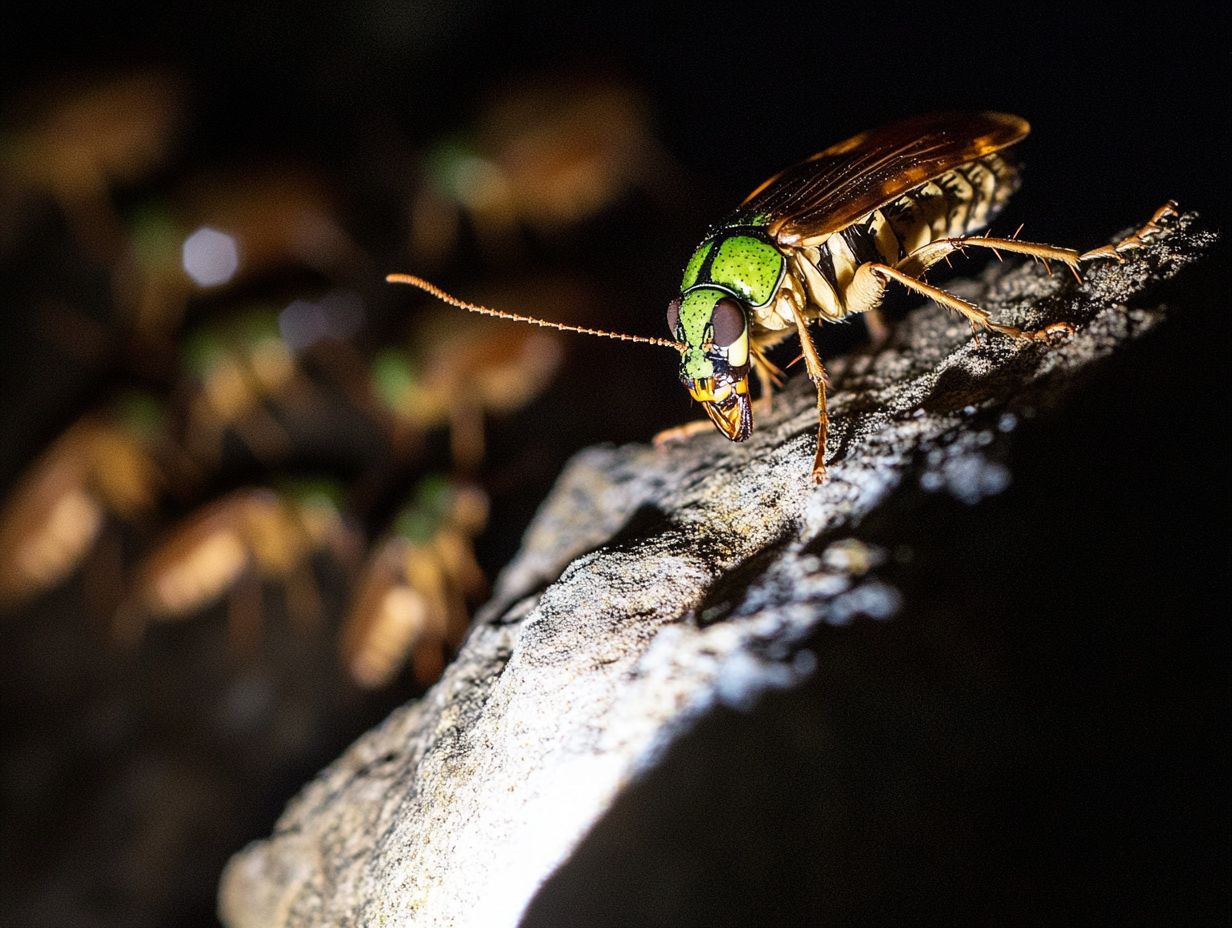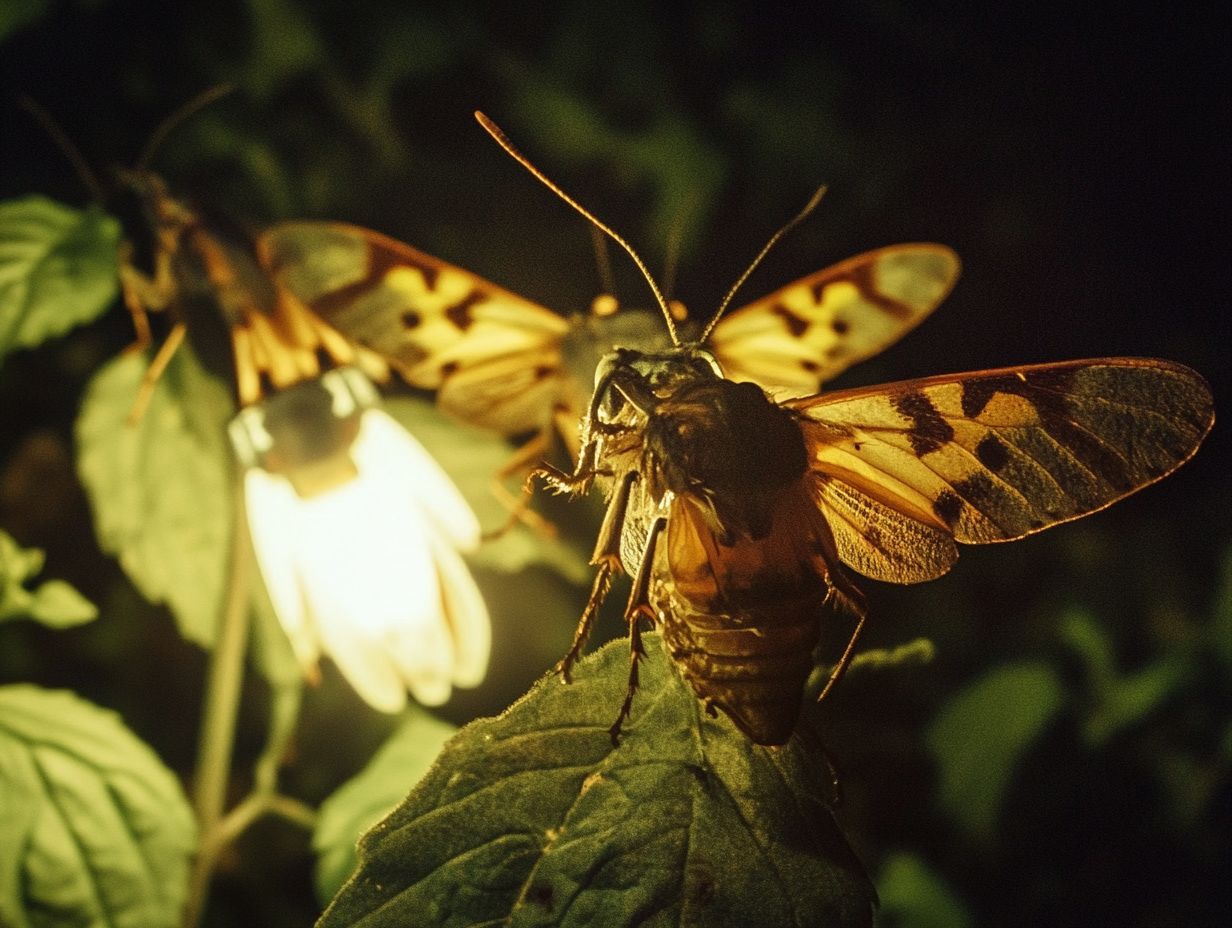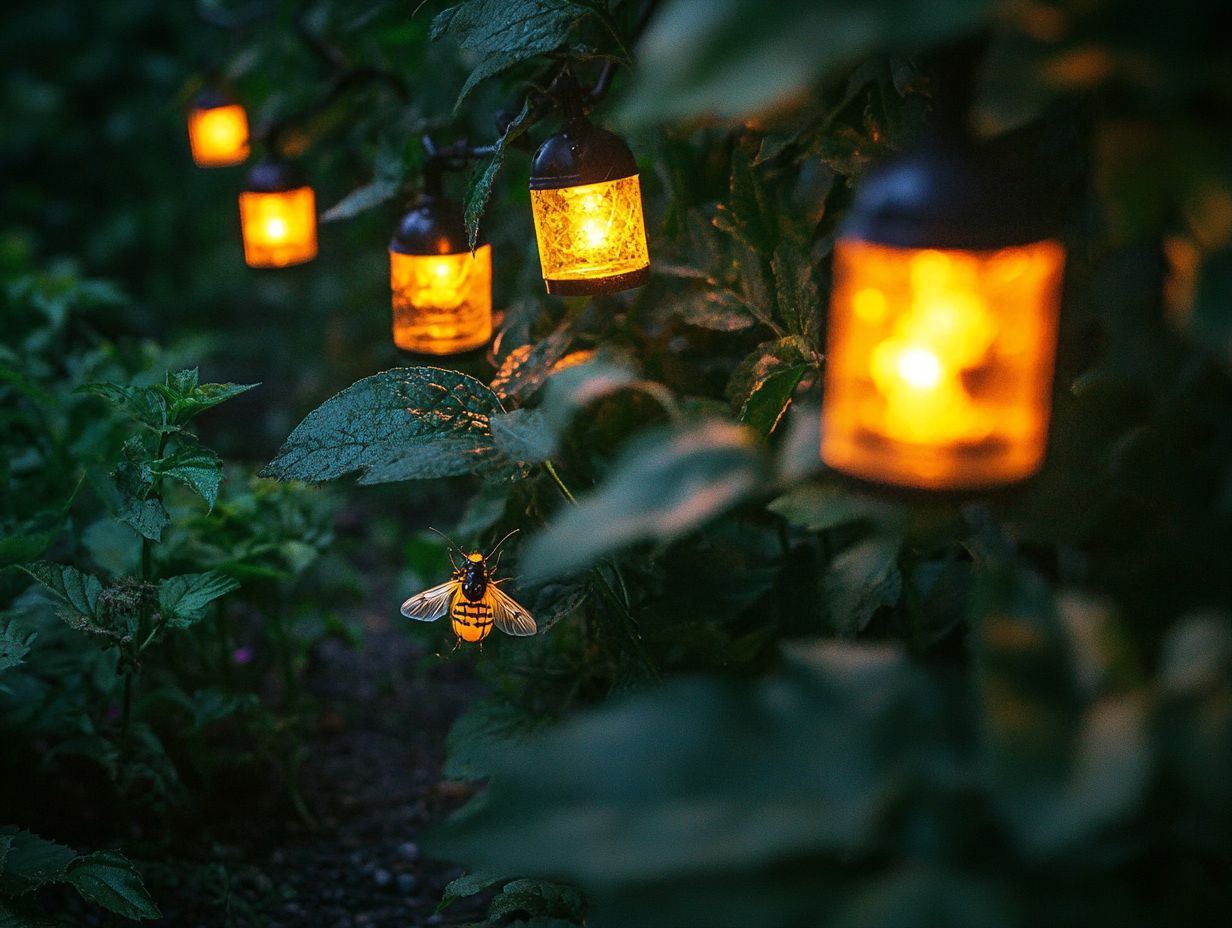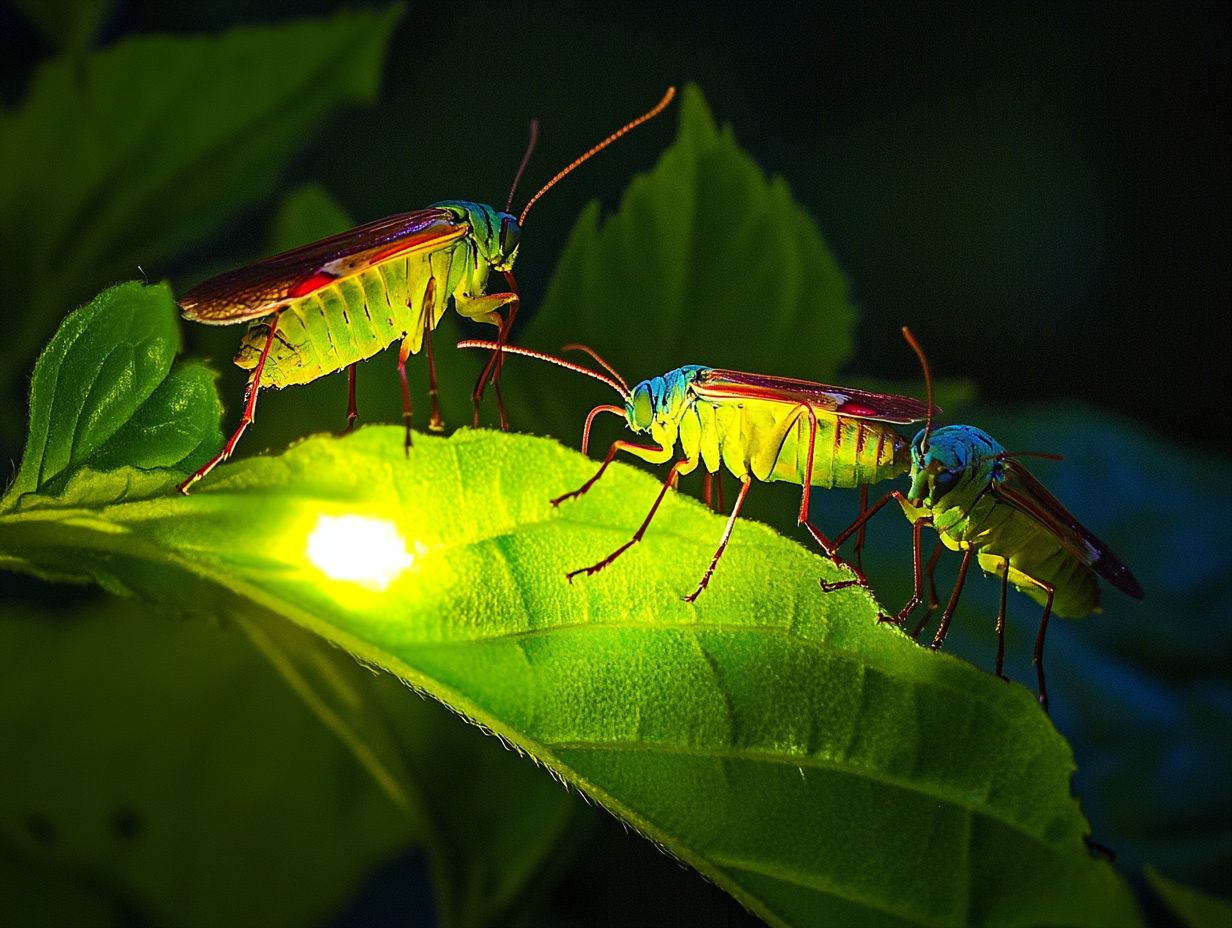Understanding the Role of Light in Pest Behavior
Ever wondered how light can control pests? Understanding its role can revolutionize your pest management strategies. Light significantly shapes the behavior and movement of pests, influencing their foraging habits and reproductive cycles in profound ways.
This article delves into the impact of various types of light both natural and artificial on pest activity. It highlights innovative approaches, such as light traps that enhance effective pest management. Explore with us the intriguing connection between light and pest behavior, and discover how you can harness this knowledge for better pest management. Act now to protect your space from pests by mastering the power of light!
Contents
Key Takeaways:

- Light plays a crucial role in pest behavior, affecting their movement and activity levels.
- The type of light can have varying effects on pests, with UV light being especially impactful.
- Use light as a tool to control and deter pests effectively.
The Importance of Light in Pest Behavior
The role of light in shaping insect behavior is essential for grasping pest dynamics. This is particularly important when considering the impact of artificial light on various insect species. Researchers such as Samuel Fabian, a postdoctoral researcher at Imperial College London, have made significant contributions in this area. They illuminate how different light sources influence insect navigation and behavioral responses, particularly in the context of light pollution.
With urbanization on the rise, light pollution presents a considerable challenge to pest control strategies. This trend underscores the need for a comprehensive exploration of how insects orient themselves and are attracted to artificial lighting, as highlighted in studies published in *Nature Communications* by researchers like Samuel Fabian.
How Light Affects Pest Movement and Activity
Light plays a pivotal role in shaping pest movement and activity. It influences various insect species in distinct ways based on the intensity and type of light they encounter, especially during flight.
Research indicates that different light intensities can either stimulate or inhibit the flight patterns of insects. This reveals crucial insights into their movement patterns. For instance, when light levels are low, pests often prefer to stay close to their breeding sites. In contrast, brighter conditions tend to trigger their migratory instincts. This variation in behavior can be attributed to the intricate design of their compound eyes specialized eyes, consisting of multiple lenses, which help insects see a wider range of light.
These specialized eyes facilitate effective navigation, enabling insects to adapt their activity levels in response to ambient light conditions. Their ability to adapt to light is crucial for foraging during dawn or dusk, allowing them to forage efficiently while simultaneously reducing the risk of predation.
Types of Light and Their Effects on Pests
The different types of light natural light, artificial light, and light-emitting diodes (LEDs) significantly influence insect behavior and ecology, particularly in settings like greenhouse cultivation. As light pollution increasingly disrupts their natural habitats, understanding these dynamics becomes essential for appreciating the intricate relationships within ecosystems.
Natural Light vs Artificial Light

Natural light and artificial light play distinct roles in shaping insect behaviors. They influence orientation and attraction patterns across various environments.
Natural light, with its gentle transitions throughout the day, serves as a way for insects to find their way. It guides species like bees in their foraging efforts by utilizing the sun s position.
In stark contrast, artificial light sources particularly those that emit higher temperatures or shorter wavelengths can create confusion among these creatures. This often disrupts their mating and feeding activities.
Take moths, for instance; they may find themselves irresistibly drawn to streetlights, only to lose their way. This can have significant repercussions on their reproduction.
Understanding these contrasts is crucial for effective pest management.
By employing specific light spectra, you can attract pests away from crops or deter them entirely. This ultimately influences your agricultural practices, especially in Costa Rican jungle regions.
UV Light and Its Impact on Insects
UV light has a profound impact on insect behavior. It influences how they are attracted to light and their various responses, especially among nocturnal insects like moths and honeybees.
You ll notice that these insects are often irresistibly drawn to ultraviolet wavelengths emitted by artificial sources. This results in their increased presence around light traps.
This behavior highlights their physiological adaptations to the natural light spectrum. However, it also presents challenges in pest management, as it can inadvertently attract beneficial species too.
Different insects respond uniquely to UV radiation. For example, some depend on it for navigation, while others may experience shifts in their mating or feeding behaviors.
It’s exciting to see how these details can shape effective pest control! Understanding these nuances is essential for developing targeted pest control methods that minimize unintended impacts on the ecosystem.
Using Light to Control Pests
Utilizing light as a pest control strategy encompasses a range of advanced methods. These include light traps designed to harness specific wavelengths effectively.
Light Traps and Other Pest Management Techniques
Light traps are an essential element of integrated pest management. They utilize artificial illumination to attract and capture various insect populations.
Typically, these traps comprise several key components: a light source, a collection mechanism, and often a specialized lure to enhance efficiency. By selecting the optimal wavelength of light such as ultraviolet you can significantly boost the trap’s effectiveness.
When you integrate these light traps with other strategies, like pheromone traps or biological control agents, you create a multifaceted approach to pest management.
This synergy not only elevates the overall capture rate but also offers a sustainable method for controlling pest populations while minimizing the impact on beneficial insects.
Preventing Pest Infestations with Light

To effectively prevent pest infestations, you must strategically utilize light. Understanding how different light sources can deter pests is essential.
By observing their behavior data, the right lighting can become a powerful ally in your pest control efforts. Altering insect orientation and behavior is key to effective management.
Strategies for Using Light to Deter Pests
Utilizing strategies that leverage light, particularly light-emitting diodes (LEDs), can be a game changer in deter pests by tapping into their behavioral responses to various light emissions supported by scientific research.
These devices possess a distinct advantage due to their ability to produce different colors of light, each known to either attract or repel specific insect species. For example, blue light has proven especially effective at disorienting moths, those pesky garden intruders.
On the other hand, yellow light tends to attract far fewer insects, making it an excellent choice for outdoor areas where you want to keep unwanted bugs at bay, especially in regions affected by light pollution.
You can see successful applications in urban landscaping and agriculture, where LED systems have significantly reduced mosquito populations without resorting to harmful chemicals, creating healthier environments for both plants and people.
The Future of Light-Based Pest Control
The future of light-based pest control is about to be transformed with new technology and scientific research. Get ready for innovative light sources that will change pest management while significantly reducing the adverse impacts of light pollution on the environment.
Innovations Shaping Pest Control
Recent advancements in technology and research findings are revolutionizing your understanding of insect orientation and behavior, with innovative tools like advanced tracking technologies and light-emitting LEDs leading the charge.
These cutting-edge tools equip pest management professionals with real-time data, enabling them to map insect movements and patterns with remarkable accuracy. By leveraging sophisticated sensors and data analytics, you can uncover how different environmental factors influence insect activity, allowing for the precise targeting of control measures.
The integration of machine learning algorithms, or computer programs that learn from data to make predictions, takes it a step further, helping to predict outbreaks by analyzing historical data and trends. These advancements not only enhance the effectiveness of pest control strategies but also promote environmentally sustainable practices, allowing for reduced chemical usage and more focused interventions based on comprehensive quantitative analysis.
Frequently Asked Questions

How does light affect pest behavior?
Light is essential for pests daily activities. It serves as a visual cue for their feeding, breeding, and movement.
Do all pests respond to light in the same way?
No, different pests have different reactions to light. Some are attracted to it while others are repelled by it.
Why are pests attracted to light?
Pests are often attracted to light because they mistake it for sunlight, which they use to navigate and locate food sources. Some pests are also attracted to specific colors of light, such as green and yellow.
Can light be used to control pests?
Yes, light can be used as a method of pest control. For example, certain types of light, such as ultraviolet (UV) light, can disrupt the mating behavior and reproduction of pests, reducing their population.
How does the intensity of light impact pest behavior?
The intensity of light can greatly affect pest behavior. High-intensity light can disorient pests and interfere with their ability to locate food and mates, while low-intensity light can attract pests towards a particular area.
Is it important to consider light in pest control strategies?
Yes, understanding the role of light in pest behavior is crucial in developing effective pest control strategies. By manipulating light, we can either attract pests to traps or repel them from certain areas, aiding in their control and management.






